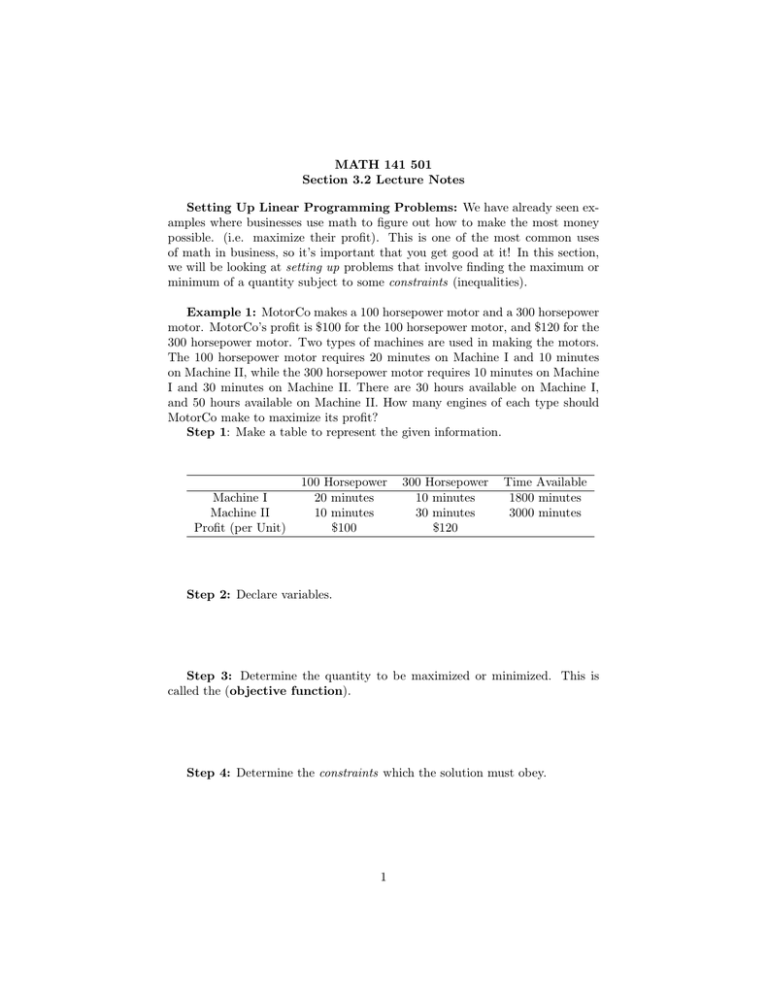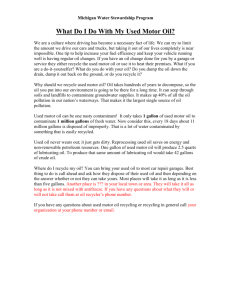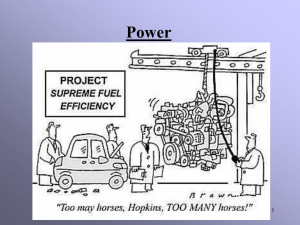MATH 141 501 Section 3.2 Lecture Notes
advertisement

MATH 141 501 Section 3.2 Lecture Notes Setting Up Linear Programming Problems: We have already seen examples where businesses use math to figure out how to make the most money possible. (i.e. maximize their profit). This is one of the most common uses of math in business, so it’s important that you get good at it! In this section, we will be looking at setting up problems that involve finding the maximum or minimum of a quantity subject to some constraints (inequalities). Example 1: MotorCo makes a 100 horsepower motor and a 300 horsepower motor. MotorCo’s profit is $100 for the 100 horsepower motor, and $120 for the 300 horsepower motor. Two types of machines are used in making the motors. The 100 horsepower motor requires 20 minutes on Machine I and 10 minutes on Machine II, while the 300 horsepower motor requires 10 minutes on Machine I and 30 minutes on Machine II. There are 30 hours available on Machine I, and 50 hours available on Machine II. How many engines of each type should MotorCo make to maximize its profit? Step 1: Make a table to represent the given information. Machine I Machine II Profit (per Unit) 100 Horsepower 20 minutes 10 minutes $100 300 Horsepower 10 minutes 30 minutes $120 Time Available 1800 minutes 3000 minutes Step 2: Declare variables. Step 3: Determine the quantity to be maximized or minimized. This is called the (objective function). Step 4: Determine the constraints which the solution must obey. 1 Linear Programming Problem A linear programming problem consists of a linear objective function to be maximized or minimized subject to certain constraints in the form of linear equations or inequalities. Example 2: Formulate but do not solve the following exercise as a linear programming problem. A town in Texas needs at least 1 million gallons of potable water per day. The water can come from the local reservoir or from a pipeline to a nearby town. The local reservoir can yield 500,000 gallons of potable water. The pipeline has a maximum daily yield of 1 million gallons. An agreement between the two towns says that the pipline must supply 600,000 gallons per day. The cost for 100,000 gallons of water from the reservoir is $200, while the cost for 100,000 gallons of pipeline water is $400. How much water should the town get from each source to minimize the daily water costs for the city? 2 Another Example Example 3: Formulate but do not solve the following exercise as a linear programming problem. (Note: The following question is very similar to one in the homework.) Aggie Finance has a total of $2.4 million earmarked for homeowner loans and business loans, where x represents homeowner loans in millions of dollars and y represents business loans in millions of dollars. Homeowner loans give a 8% annual rate of return. Business loans yield a 12% annual rate of return. Management is worried about the perception that favors businesses over individuals, so it wants the total amount of homeowner loans to be at least four times as much as the total amount of business loans. Determine the total amount of loans of each type Aggie Finance should offer to maximize its returns P (in millions of dollars). 3





